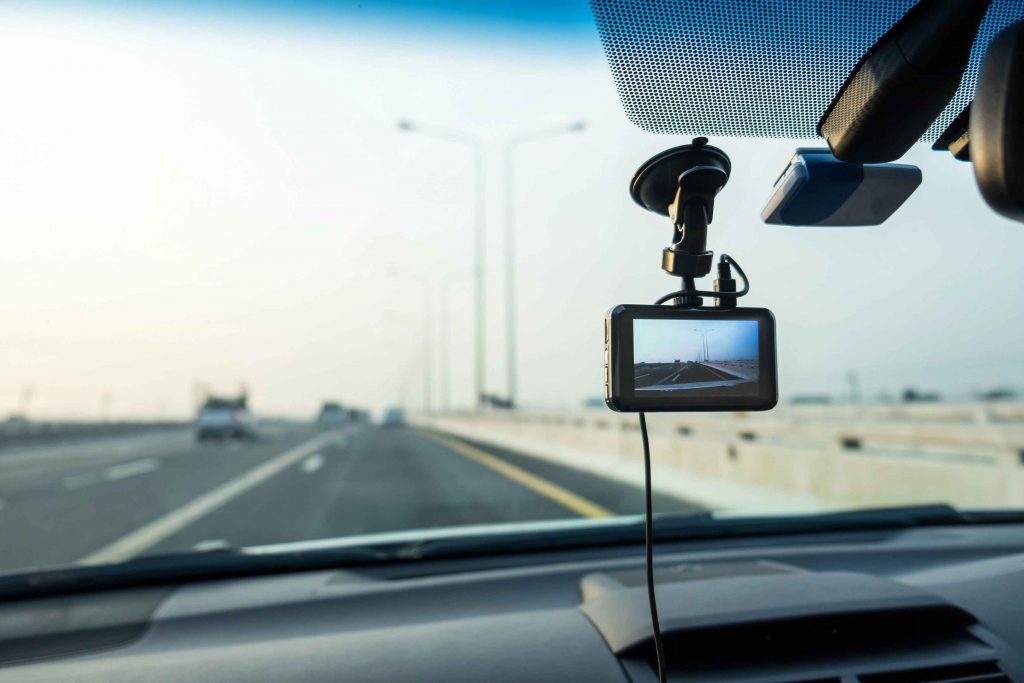Even though some dash cams come with in-built batteries, they are not so strong to record hours of driving. The internal battery lasts only a few minutes, meaning the cam must be plugged into a power outlet most of the time.
Because different dash cams are differently powered, I will try to explain all possible methods on how are dash cams powered and how to connect the cords and wires without a professional’s help.
Consider the dash cam model and type when connecting the power cords. Follow the instruction manual included with the dash cam device and follow the steps below.

How Are Dash Cams Powered
Our vehicles create power using fuel. Inside our vehicle are one or more power outlets that help us use different devices, like MP3 players, phone chargers, and dash cams.
You can power your dash cam either from the cigarette lighter socket or from the fuse box. If you choose the cigarette lighter socket, use only the power cord included in the dash cam. Never use an existing one because it might not meet the cam’s needed voltage. Using a different than the original cable might damage the dash cam or cause difficulties in its power supply.
Front-view dash cams are generally powered using the cigarette lighter socket, while rear dash cams come with an instruction manual for fuse box connection. However, the dash cam power connection method may depend on the manufacturer.
In case your dash cam requires a fuse box connection, carefully follow the manufacturer’s instructions or ask for a professional’s help.
Read more: Can A Dash Cam Be Powered By USB?
Different Ways to Power Your Dash Cam
Lighter socket
Powering the dash cam using the lighter socket in your vehicle is the simplest way to provide a power source for all devices, including the dash cam.
All dash cams that work using a cable and lighter socket device come with included accessories and cords. The only thing you should do to connect the dash cam, in this case, is to install the cam and plug it into the lighter socket using the adapter.
Generally, this method will keep your dash cam on only when your vehicle is on. Most car models turn off the lighter socket because it might drain the vehicle’s battery.
Newer car models, like Dodge, Ford, etc., come with always ON lighter sockets. In these car models, the vehicle’s battery would not drain, and the dash cam would stay on even if the vehicle is parked and off.
Connection steps
- Mount the dash cam on the rearview mirror or windshield;
- Plug the adaptor into the lighter socket;
- Connect the dash cam to the lighter socket adaptor;
- Set the dash cam, and it is ready for use.
Fuse box
Hardwiring the dash cam into the fuse box is a common way to power rear view dash cams and some front-view dash cams. This method requires connecting the dashcam directly to the car’s fuse box.
For this method, you will need a hardwire installation kit. You will find two different installation kits on the market. One is a two-wire kit, and the other is a three-wire kit. Both of them have an additional voltage cutoff option that lets you set a voltage level.
Compared to the lighter socket method, the fuse box method will keep your dash cam on all the time, even when the vehicle’s engine is off.
Also read: Can You Use A Dash Cam Without Wires?
Connection steps
- Get an installation kit and position the dash cam inside your vehicle;
- Secure the cable in the windscreen lining and then down the A-pillar side;
- Find the fuse box. It should be somewhere around the passenger footwell;
- Choose a fuse slot and select the correct fuse cable;
- Put the original fuse in the empty slot of the fuse cable;
- Find the correct grounding spot for the black wire;
- Connect and tie the excess dash cam wire;
Conclusion
I hope this guide has helped you find out how are dash cams powered and what is the best way to power your dash cam.
Each car model has a different dash cam installation, but in general, you can power the dash cams either using the lighter socket or the fuse box.
